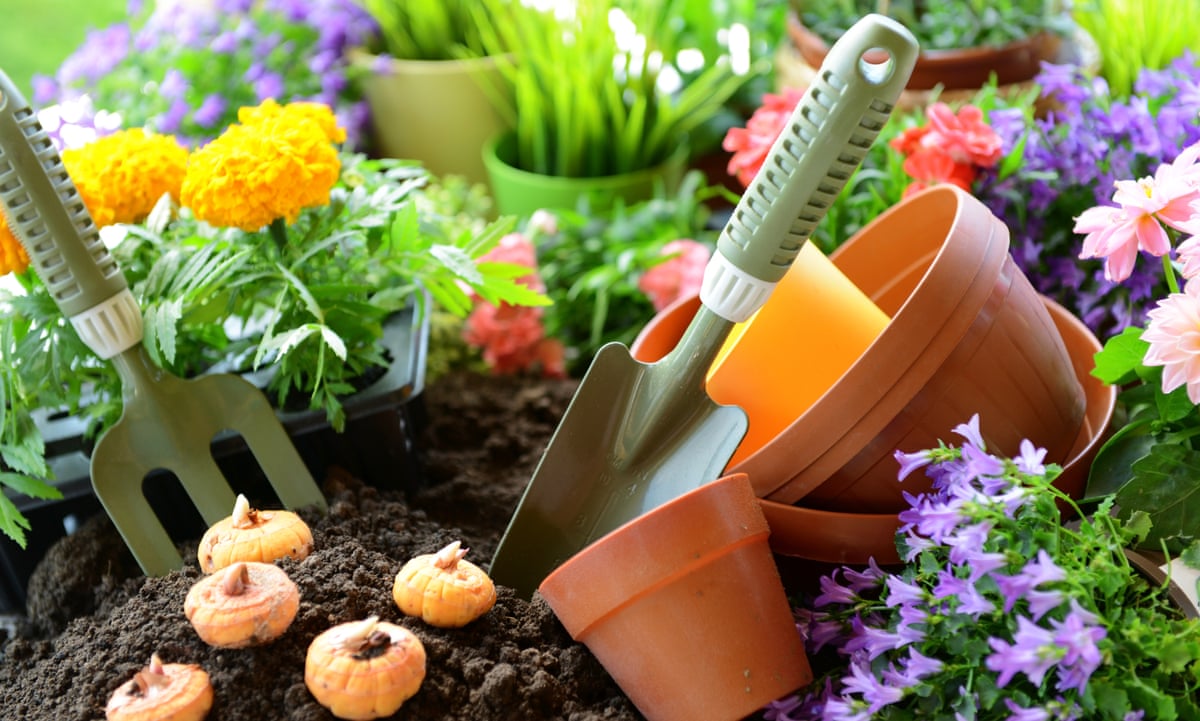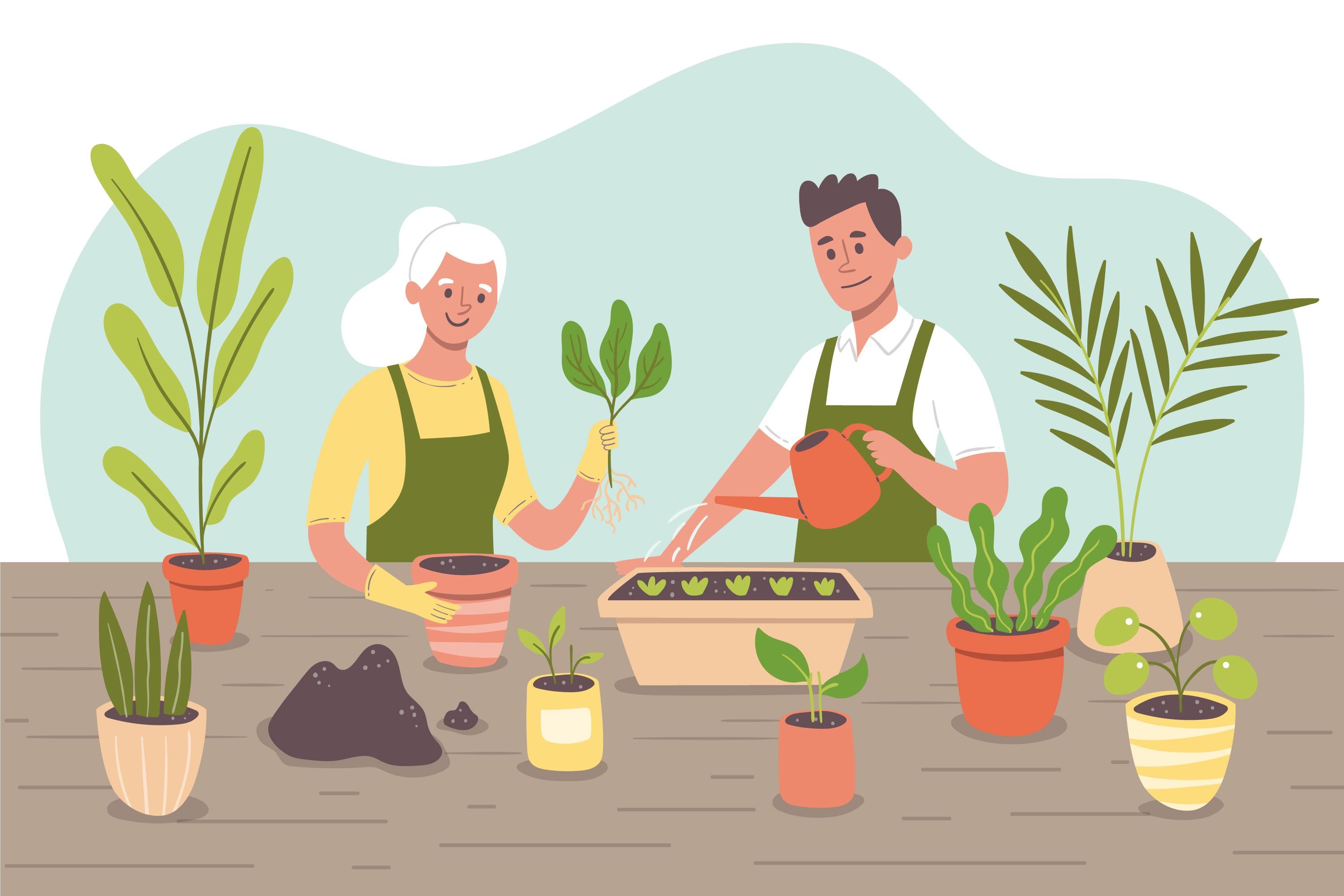Gardening 101: Building Your Ultimate Gardening Kit for Beginners
Wiki Article
From Seed to Sprout: A Beginner's Guide to Gardening Success

Picking the Right Seeds
To ensure an effective yard, you require to pick the appropriate seeds for your expanding conditions and desired plants. When selecting seeds, there are a couple of crucial aspects to take into consideration. First of all, consider the environment in your location. Different plants thrive in various climates, so it's essential to choose seeds that are ideal for your certain region. If you live in a completely dry and warm climate, as an example, you'll want to select seeds that are drought-tolerant and can stand up to high temperatures. On the other hand, if you reside in a cooler environment with much shorter expanding seasons, try to find seeds that have a much shorter maturity duration.Some plants like sandy dirt, while others grow in clay or fertile dirt. Some plants, like peppers and tomatoes, require complete sunlight to grow, while others, such as leafy greens, can tolerate partial shade.
Finally, consider your wanted plants and their details needs. Pick seeds for selections that you delight in eating and that will grow well in your garden if you desire to expand veggies. If you want flowers, choose seeds for plants that will complement each other in terms of height, blossom, and shade time. By thoroughly selecting the best seeds for your expanding conditions and desired plants, you'll set yourself up for a successful garden.
Preparing the Soil
Since you have actually picked the right seeds for your garden, it's time to prepare the dirt for ideal development. Preparing the dirt is an essential action in horticulture success, as it gives the foundation for your plants to grow.Begin by eliminating any weeds or particles from the area where you plan to plant (gardening for beginners). Weeds can complete with your plants for nutrients and water, so it's essential to get rid of them prior to planting. Make use of a garden fork or hoe to loosen up the soil, separating any kind of clumps and creating a loosened, crumbly structure
Spread a layer of organic issue over the soil and use a yard fork or rake to incorporate it right into the top few inches. This will certainly assist enhance water drainage, dampness retention, and vitamins and mineral accessibility for your plants.
The majority of plants prefer a somewhat acidic to neutral pH, around 6.0 to 7.0. You can purchase a soil testing package from a yard facility or send out an example to a laboratory for evaluation.
Growing and Watering Strategies
After preparing the dirt, it's time for you to concentrate on planting and watering techniques to ensure the success of your yard. When it pertains to planting, ensure to adhere to the instructions on the seed packets or plant tags. Various plants have different demands for growing deepness and spacing. Dig a hole that is just the right dimension for the plant's origins and carefully position it in, making certain not to damage the origins. Fill up the opening with soil, carefully firming it around the plant.Watering is an essential step in horticulture. It is necessary to water your plants properly to promote healthy development. The trick is to give sufficient water without sinking the plants. When watering, goal to moisten the soil evenly, making certain that the water reaches the plant's roots. Prevent overwatering, as this can lead to root rot and other troubles. A great guideline is to water deeply yet less often, permitting the dirt to dry out slightly between watering sessions.
To identify when to water, inspect the moisture level of the soil by inserting your finger about an inch deep. If it feels dry, it's time to water. Take into consideration utilizing a watering can or a tube with a gentle spray nozzle to avoid destructive fragile plants.
Nurturing and Preserving Your Yard
Take the time to on a regular basis care for and have a tendency to your yard to guarantee its continued development and success. Nurturing and maintaining your garden is important in order to keep your plants successful and healthy and balanced. One essential element of yard upkeep is weeding. Routinely eliminate any type of undesirable plants that might contend with your yard for nutrients and space. Additionally, consistently check your plants for any type of signs of illness or bugs. Early discovery can stop the spread of damaging insects or conditions and save your plants from irreparable damages. Another vital job is pruning. Trim back thick branches and get rid of infected or dead components of plants to promote healthy and balanced development. It is also important to offer appropriate water and nutrients to your yard. Water your plants frequently, taking care to prevent overwatering, as this can bring about root rot. Usage plant foods to provide vital nutrients that might be lacking in your dirt. Lastly, don't neglect to mulch! Applying a layer of compost around your plants assists conserve moisture, subdue weeds, and manage dirt temperature. By constantly caring for and keeping your yard, you will certainly guarantee its ongoing development and success.Harvesting and Enjoying the Fruits of Your Labor
When can you begin enjoying the rewards of your effort in the garden? The solution relies on the sort of plants you have grown. Some veggies, like lettuce and radishes, can be harvested as quickly as they reach a preferable size (gardening kit for beginners). Others, such as tomatoes and peppers, need a longer growing period prior to they are all set to be selected.To determine if your veggies are ready for harvest, you require to look for specific indications. They need to easily separate from the creeping plant when gently pulled.
When harvesting, it is necessary to use the appropriate tools and techniques. A sharp set of pruning shears or a yard knife can be utilized to cleanly reduce veggies from the plant. Be sure to collect in the early morning when the temperature levels are cooler, as this will help keep the quality of your produce.
Once you have harvested your veggies, it's time to enjoy the fruits of your labor. Freshly picked vegetables can be utilized in a selection of delicious recipes, from salads to stir-fries. Additionally, you can protect your harvest by canning, freezing, or drying them to take pleasure in throughout the year.

Final Thought
By following these beginner-friendly methods, you are well on your way to nurturing a thriving garden. Keep in mind to give your plants the care and focus they need, and soon you will certainly be appreciating the beauty and bounty of your really own garden.To make sure a successful yard, you require to choose the ideal seeds for your growing conditions and preferred plants. By thoroughly selecting the appropriate seeds for your expanding problems and preferred plants, gardening kit for beginners you'll establish yourself up for an effective yard.
Weeds can contend with your plants for nutrients and water, so it's vital to obtain rid of them prior to planting. When it comes to growing, make sure to comply with the guidelines on the seed packets or plant labels. Different plants have different requirements for planting depth and spacing.
Report this wiki page